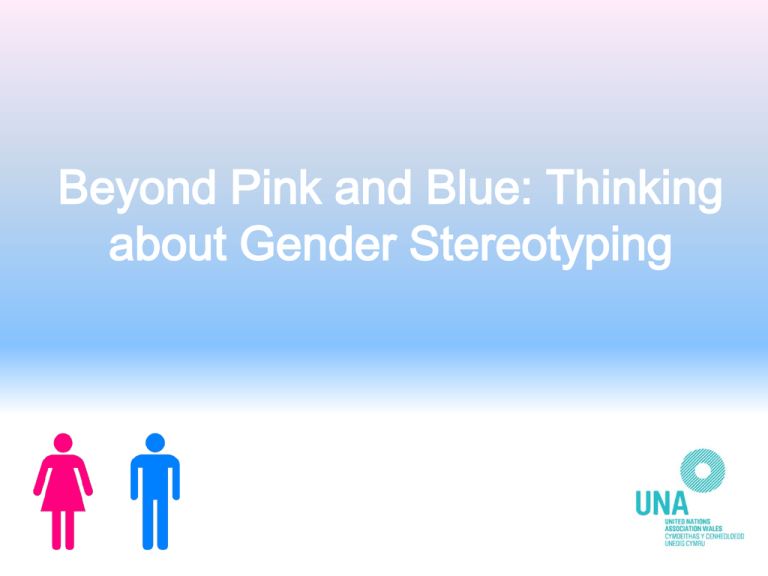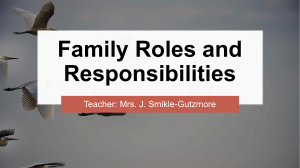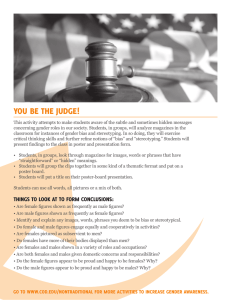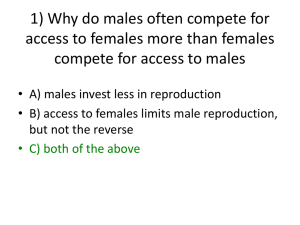
Beyond Pink and Blue: Thinking
about Gender Stereotyping
Defining sex and gender?
Sex: biological differences between males and
females.
Gender: the culturally and socially constructed
differences between females and males based
on meanings, beliefs, and practices that a group
associates with femininity or masculinity.
Therefore…
Gender determines what is expected, allowed and
valued in a woman or a man, and is noted as a social
construct.
Gender stereotypes are simplistic generalizations
about the gender attributes, differences, and roles of
individuals and/or groups.
Some historical views...
Mythological notion of man as the wise, just, and
learned warrior.
The age of Empire (18th/19th centuries) – Man as a
conqueror and an adventurer.
Victorian ideal of true womanhood – glorified image of
the prudish, respectful and tame female counterpart.
What comes to mind when you think of
feminine, or manly characteristics?
Gender roles... Agents of socialization:
•Parents and family: treatment, clothes, toys, or
chores.
•Peers: pressure to behave in a certain way, and to
have certain aspirations.
•Influence of religion and cultural differences.
•Media representations.
Some examples of gender inequality:
• The gender pay gap in Wales, as of 2012, stands at 22% per week. In short, a
woman, who works the same amount of hours as a man, on average earns 22%
less than that of her male counterpart.
• Husbands in Egypt, Bahrain and Syria can file an official complaint at national
airports to forbid their wives from leaving the country for any reason.
• In Saudi Arabia, women are not allowed to drive a car.
• In the House of Commons, in Westminster, less than 25% of MPs are female.
Progress... But still a long way to go?
Since women gained the right to vote, on equal terms with
men, in 1928, there has been much progress with regards to
gender equality in Britain, and across the world.
However, despite issues of gender equality now demanding
a great level of attention, there is much still to be done in the
way of changing attitudes and ensuring that discrimination
on the basis of one’s gender does not continue.












